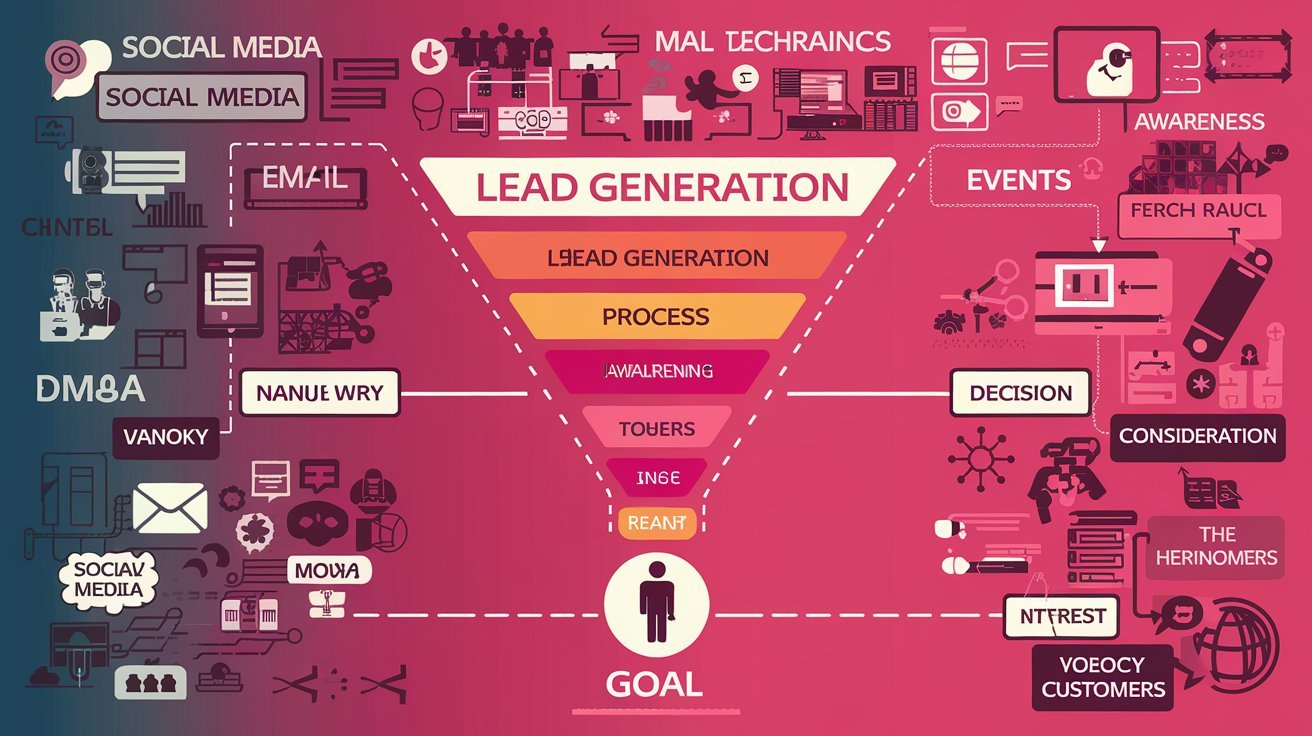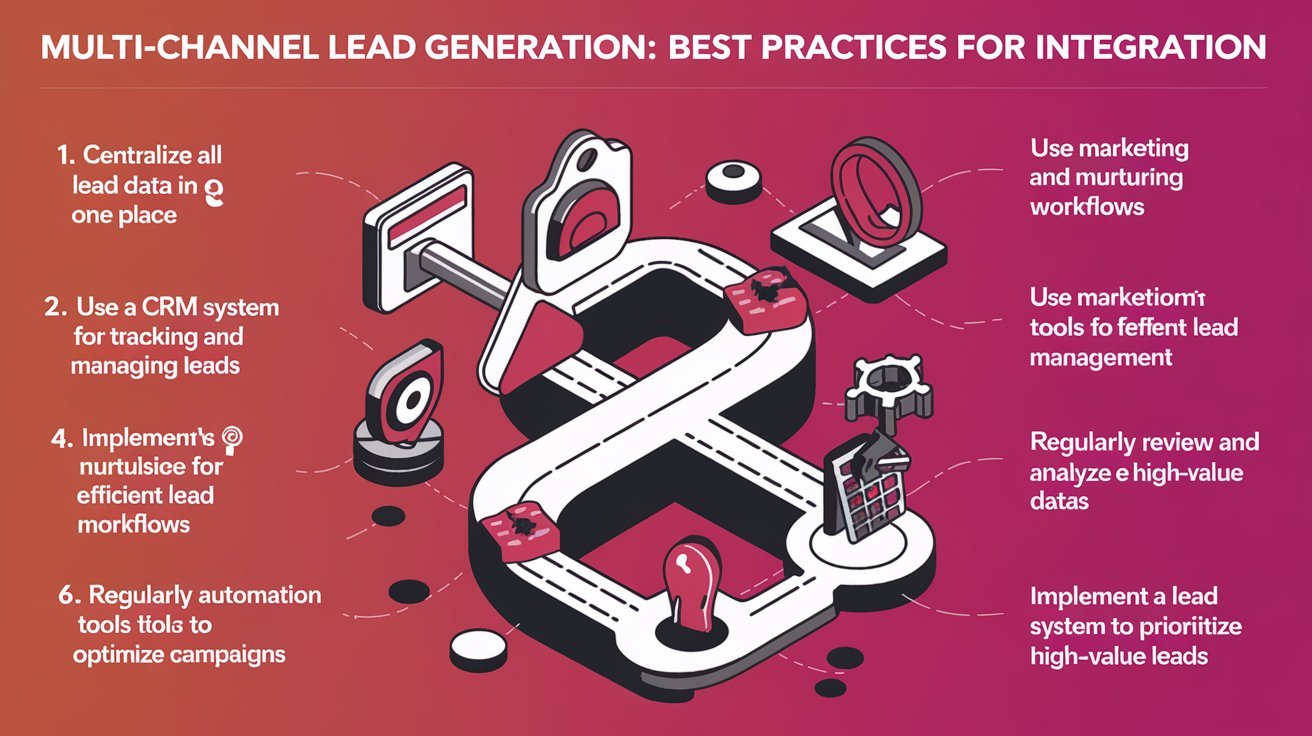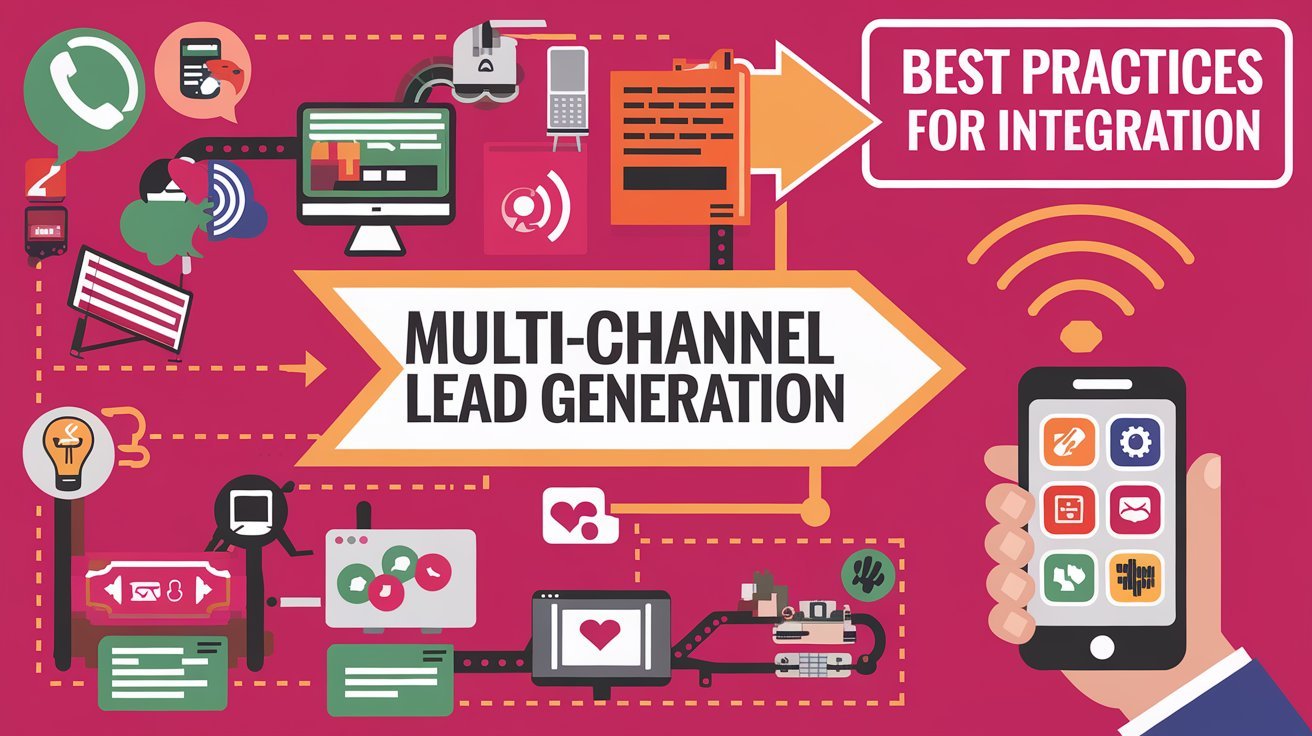complex digital landscape, a single-channel approach to lead generation is no longer sufficient. To effectively reach and engage potential customers, businesses need to adopt a multi-channel strategy that leverages various platforms and touchpoints. However, merely using multiple channels isn’t enough; integrating these channels seamlessly is crucial for maximizing impact and efficiency. In this blog, we’ll explore best practices for integrating multi-channel lead generation to ensure a cohesive and effective approach.
1. Understand Your Audience Across Channels
To successfully integrate your lead generation efforts, start by understanding where your audience spends their time and how they prefer to engage. Different segments of your audience may be more active on certain platforms—such as LinkedIn for B2B leads or Instagram for younger consumers.
Best Practices:
- Conduct Audience Research: Use surveys, social media insights, and web analytics to gather data on your audience’s behaviors and preferences.
- Create Buyer Personas: Develop detailed profiles of your ideal customers to tailor your approach for each channel.
2. Develop a Unified Strategy
A multi-channel approach requires a unified strategy that aligns with your overall business goals. Ensure that your lead generation tactics are not only consistent in messaging but also complementary across channels.
Best Practices:
- Set Clear Objectives: Define what you want to achieve with each channel and how it fits into your broader lead generation goals.
- Create a Channel Plan: Map out how each channel will contribute to your lead generation efforts, including specific tactics and timelines.

"These cases are perfectly simple and easy to distinguish. In a free hour, when our power of choice is untrammeled and when nothing prevents our being able to do what we like best, every pleasure is to be welcomed and every.!"
Cherry Cruuz
3. Ensure Consistent Messaging
Consistency in messaging is key to building trust and recognition with your audience. Each channel should reinforce the same core message, but tailored to fit the channel’s unique format and audience expectations.
Best Practices:
- Develop Core Messaging: Establish a central message that conveys your value proposition clearly.
- Adapt for Each Channel: Customize the messaging for each platform while maintaining the same brand voice and key points.
4. Integrate Data and Analytics
To effectively manage and optimize your multi-channel lead generation efforts, integrate data from all channels. This enables you to track performance, understand audience behavior, and make data-driven decisions.
Best Practices:
- Use Unified Analytics Tools: Implement tools that consolidate data from different channels into a single dashboard for easy analysis.
- Monitor Key Metrics: Track metrics such as conversion rates, cost per lead, and channel effectiveness to evaluate performance.
5. Create a Cohesive Lead Nurturing Process
Once leads are generated, they should be nurtured through a cohesive process that maintains engagement across channels. Effective lead nurturing ensures that potential customers receive relevant content and follow-ups at appropriate stages.
Best Practices:
- Develop Lead Scoring: Use lead scoring to prioritize and segment leads based on their engagement and behavior across channels.
- Implement Automated Workflows: Set up automated workflows that deliver personalized content and follow-ups based on lead interactions.
6. Leverage Cross-Channel Retargeting
Cross-channel retargeting helps re-engage leads who have interacted with your brand but haven’t yet converted. By using targeted ads across different channels, you can keep your brand top-of-mind and encourage further engagement.
Best Practices:
- Use Retargeting Ads: Implement retargeting strategies to show ads to leads who have visited your website or engaged with your content.
- Customize Retargeting Campaigns: Tailor your retargeting messages based on the lead’s previous interactions and interests.
7. Foster Seamless Customer Experiences
A smooth and integrated customer experience across channels enhances satisfaction and increases the likelihood of conversion. Ensure that interactions on one channel are consistent and relevant to those on another.
Best Practices:
- Provide Omnichannel Support: Offer support and engagement options across all channels, such as live chat, social media, and email.
- Maintain a Centralized CRM: Use a CRM system to keep track of all interactions and touchpoints with leads, ensuring a consistent experience.
8. Test and Optimize Your Approach
A multi-channel lead generation strategy should be dynamic and adaptable. Regularly test different approaches and optimize based on what works best for your audience and business objectives.
Best Practices:
- Run A/B Tests: Experiment with different messages, offers, and tactics to determine which ones drive the best results.
- Analyze and Iterate: Continuously analyze performance data and make adjustments to improve effectiveness and efficiency.
9. Encourage Team Collaboration
Successful multi-channel lead generation requires collaboration between marketing, sales, and customer service teams. Ensure that all teams are aligned and working together towards common goals.
Best Practices:
- Hold Regular Meetings: Schedule regular meetings to review performance, share insights, and discuss strategies.
- Foster Communication: Use collaborative tools and platforms to facilitate communication and coordination among teams.
10. Prioritize Customer Feedback
Finally, listen to your customers and gather feedback to understand their preferences and pain points. This information can provide valuable insights into how your multi-channel strategy is performing and where improvements are needed.
Best Practices:
- Conduct Surveys and Polls: Use surveys and polls to gather feedback on your lead generation efforts and overall customer experience.
- Act on Feedback: Implement changes based on customer feedback to enhance your strategy and better meet their needs.

- Establish a central message that reflects your brand’s value proposition.
- Customize your messaging to fit the format and style of each channel while maintaining the core message.
- Create and follow brand guidelines to ensure uniformity in tone, style, and visuals.
- Implement tools that consolidate data from various channels into a single dashboard.
- Look for patterns and trends to understand which channels are performing best and why.

